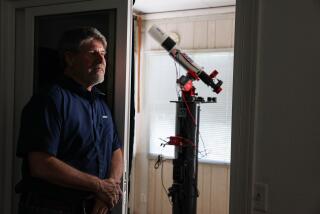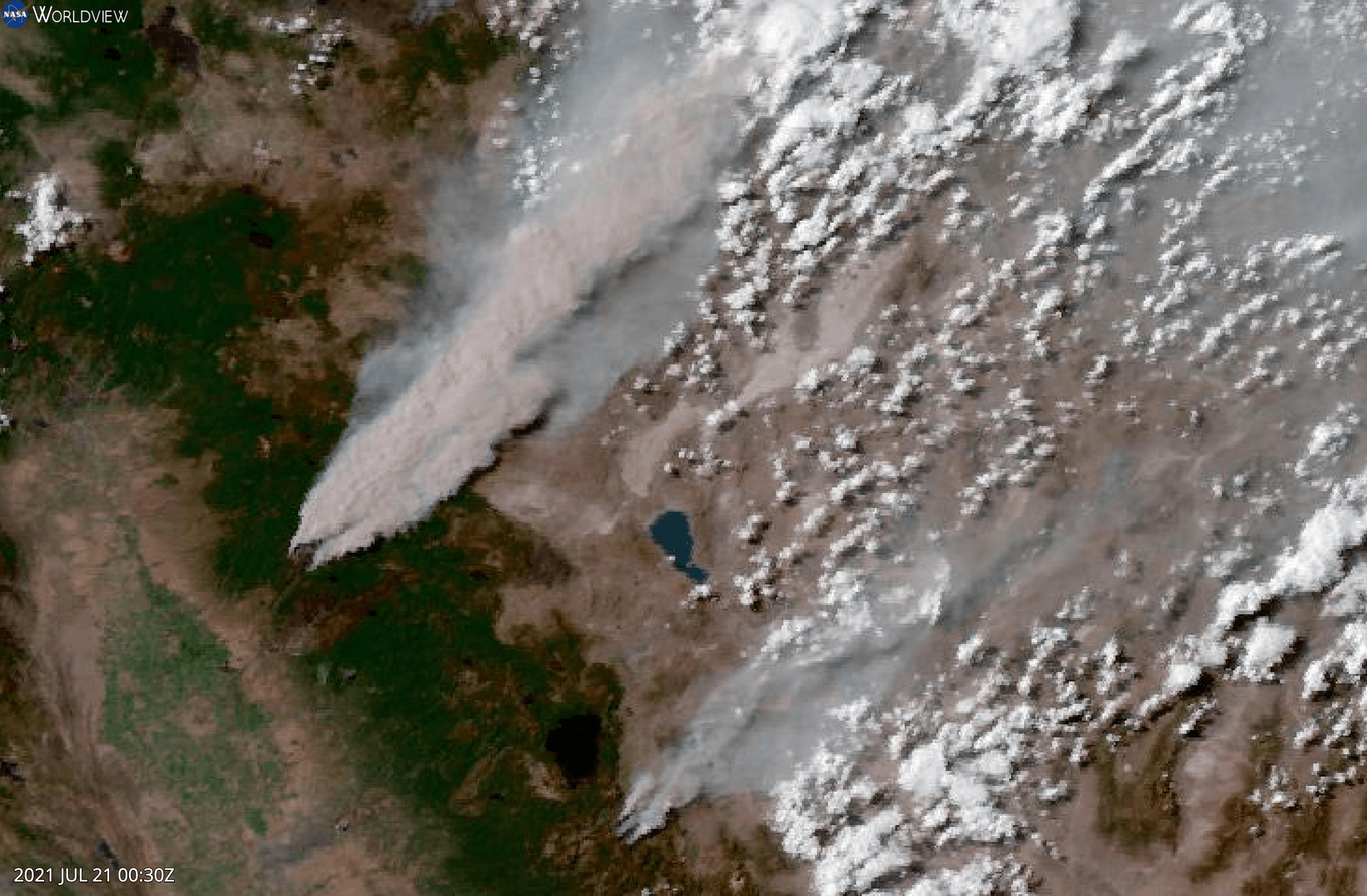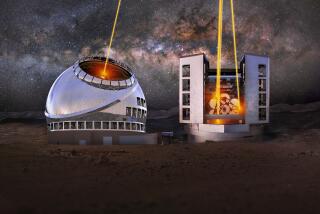Wide Eye to the Heavens : Astronomers Will Link 10 Radio Telescopes Spread Across 5,000 Miles to Get Sharp Images From Distant Recesses of the Universe
Using what may be the most powerful supercomputer ever assembled, scientists are preparing to electronically link 10 radio telescopes scattered over half a hemisphere into one enormous instrument capable of clearly imaging the deepest recesses of the universe.
Astronomers and government officials are scheduled to meet today at the National Radio Astronomy Observatory field station in Socorro, N.M., to dedicate the new $80-million system, called the Very Long Baseline Array (VLBA).
By focusing all 10 of its 82-foot-wide radio dish receivers on a single spot in the cosmos and using the computer to match up and multiply the signals they snare, astronomers will have a telescope capable of conveying an image sharp enough to let someone in New York read a newspaper in Los Angeles.
“Of course, compared to what it will actually be used for, the distance across country is very small,” said Marshall Cohen, a radio astronomy professor at Caltech. “What excites astronomers is that it has great angular resolution--sharpness--at tremendous intergalactic distances.”
“With the VLBA,” said UCLA astronomy professor Mark Morris, “one has the opportunity to peer down into the core of a quasar . . . billions of light-years from Earth.”
One light-year is the distance covered in a year by an object moving at the speed of light--roughly 5.88 trillion miles.
Researchers look to the radio telescope network to help them see inside star-making clouds of hydrogen gas and study curious plasma jets that at first glance appear to be moving faster than the speed of light. At the same time, they hope that the radio telescope array will help them work out answers to several fundamental questions: How long has the universe existed? Does a black hole lie at the center of our galaxy? How fast and in what direction are Earth’s tectonic plates moving?
Indeed, the Earth-related use of the array has particularly intrigued scientists. By comparing the distance of each radio dish to a fixed star, researchers can deduce how fast those dishes are moving relative to one another and how much strain is building up on faults along tectonic plates, upon which the Earth’s continents rest. This has led some scientists to speculate that the telescope network could be useful in predicting earthquakes.
The Very Long Baseline Array--so named because each of its radio dishes are separated by baselines, or distances, thousands of miles long--consists of two major parts: receivers and processors.
The receivers are networked radio telescopes strategically scattered over a 5,000-mile arc from Hawaii to the U.S. Virgin Islands. Half of the 10 antennas are in the Southwest--two in New Mexico and one each in west Texas, Central California and Arizona--but the remainder are as far afield as Washington, Iowa and New Hampshire.
The processors--2,640 of them, built into specially designed integrated circuits--are in six refrigerator-size boxes that make up the VLBA Correlator in Socorro, a single-purpose supercomputer capable of performing 750 billion simple calculations a second.
Jonathan D. Romney, who helped design the correlator and oversaw its construction, said the computer is so blazingly quick that if all 250 million residents of the United States had a checkbook and everyone neglected to add and subtract 3,000 entries, the correlator could balance every account in one second.
“If this were a (general purpose) computer, it would be way beyond the supercomputer category,” Romney said from New Mexico. “Of course, supercomputers can do whatever you want them to do. Ours does only the . . . kinds of calculations we want.”
Hopes are high for the project because combining signals from telescopes 5,000 miles apart can produce images as sharp as a single telescope 5,000 miles across. The process, called interferometry, is used with optical telescopes as well, but is most effective at radio frequencies.
Once the system is fully operational later this year--its debut has been delayed by the need to work out bugs in the correlator--astronomers will make observations by aiming all 10 dish antennas at the speck of space they wish to study.
Technicians at each ground station will digitally record radio signals on dinner-plate-size reels of one-inch-wide magnetic tape. Extremely accurate atomic clocks will time-stamp each data bit recorded. The tapes will be shipped to Socorro for processing.
The correlator will then laboriously sift signal from static by comparing every data bit on each tape with the data recorded at the same microsecond by the other ground stations. Refined data is then sent to conventional computers to produce picture-like images called radiographs, or maps.
Images produced by data from only about half of the 10 dishes created great excitement at a workshop for radio astronomers in Germany last month. Morris said the images--of a suspected black hole at the center of the Milky Way--were a “tantalizing” indication of the extraordinarily detailed pictures the system is capable of producing.
“It’s not the kind of instrument that can lead instantly to revolutionary breakthroughs,” he said. “But it can greatly improve the quality of the images.”
Although its antennas cannot detect extremely faint signals, they can pick out fine detail in very distant objects that emit stronger signals--”like a zoom lens,” said National Radio Astronomy Observatory Director Kenneth I. Kellermann.
Kellermann said the network of telescopes may further improve its sharpness, or angular resolution, by combining its signal with those from instruments in Europe, Asia, South America or Australia.
* MORE SCIENCE NEWS: A23
A Cosmic Zoom Lens
By combining weak signals gathered by 10 radio telescopes between Hawaii and the Caribbean, astronomers can electronically simulate one receiver with a dish 5,000 miles wide. Using an atomic clock, this giant telescope--called the Very Long Baseline Array--records data from all the smaller telescopes at the same micro-second. Data from each dish is sent to a supercomputer in New Mexico, where it is synchronized and amplified. The results are finely detailed images of very distant objects.
How it works: 1. The network of radio telescopes, synchronized by atomic clocks, receive signals simultaneously. The signals received are amplified, then digitized.
2. Digitized data from each of the radio telescopes is recorded. Tapes of recorded data from each site are delivered to Socorro, N.M., for processing.
3. Combined data is played back to the correlator, a super computer that matches and multiplies the signals.
4. The clarified set of signals paint a detailed picture of the object under observation.
Location of the Telescopes Ten radio telescopes, from Hawaii and across the continental United States to the Caribbean, will be used in the project.
SOURCE: National Radio Astronomy Observatory






